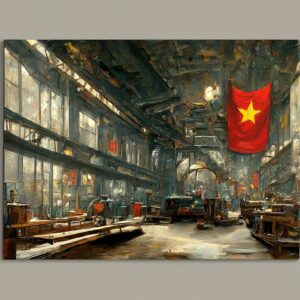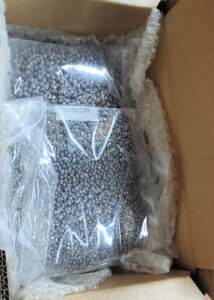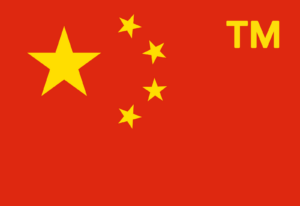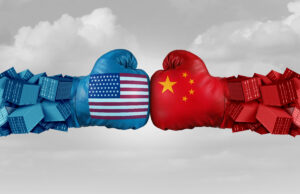1. Sorry, But Overseas Factory Problems are Likely YOUR Fault
The genesis for this post is an excellent post written by Renaud Anjoran and a series of Linkedin comments on that post. The post is on Renaud’s Quality Inspection Blog and it’s called 28 Common Problems Chinese Suppliers Cause Importers. Renaud is the long-term owner of a Shenzhen-based QC+ firm (Sofeast) with whom our international manufacturing lawyers have had the pleasure of working on many China manufacturing projects. If you do manufacturing in China (or even elsewhere), you really should be reading Renaud’s blog.
As per its title, Renaud’s 28 Common Problems post lists out 28 common problems foreign buyers face with their Chinese suppliers. And like so many of the posts Renaud writes, I found myself (last night) nodding my head the whole time while I read it. I then thought it would be helpful to share Renaud’s post on Linkedin so I did, here, with the following blurb: “Not just Chinese suppliers, but suppliers in most other countries are consistently guilty of these 28 things as well. A very helpful piece for anyone manufacturing overseas.”
Richard Brubaker, another long-time China hand, who too knows China as well as anyone, left the following comment on Linkedin: “After 20+ years of this conversation, and dozens of book available at any airport in Asia, I think it’s time to reframe this as the 28 ways your process failed you.” Renaud responded to this by saying “absolutely” and I responded to it by saying I 100% agreed. The sad truth is that at least 90 percent of the time, the so-called problem with Chinese or any overseas product supplier lies with the foreign buyer not having taken the right steps to protect itself. In other words, all three of us are essentially blaming “the victim.”
2. Overseas Manufacturing Problems are on the Increase (Again)
With foreign buyers fleeing China, many factories in China are getting scared and desperate, and their common remedies for that are to cut corners on quality and to take their foreign buyer’s IP and compete with them. We had this to say about the increase in trademark thefts in China Trademark Theft. It’s Baaaaaack in a Big Way:
But starting about a year or so ago, our China trademark lawyers started getting a ton of China trademark theft calls, and the number of those calls has been accelerating ever since. Why has the tide on trademark “theft” come in again? Two reasons. One, there is hardly a soul in China who does not know how to get around the prohibition on an agent registering the trademark that rightfully should go to the foreign company for whom it is acting as an agent. If your manufacturer in Shenzhen wants to secure “your” trademark in China it will not go off and register it under its name, as it knows that cannot work. So instead of registering the trademark under its own Shenzhen company name, it will ask a cousin or a nephew in Xi’an to register it under its company name, making it nearly impossible for you to invalidate the trademark. Two, many (most) Chinese factories are hurting and they desperately want to improve their profit margins. What better way to do so than to sell a product under a prestigious or well-known American brand name — or even just any American brand name? See Your China Factory as your Toughest Competitor.
In China Factory Disputes: The 101, we had this to say about the increase in product quality and other Chinese factory problems:
Many China factories are in deep trouble due to declining sales stemming from the US-China Cold War. I base this not just on the economic statistics everyone is seeing but also on the fact that our China lawyers are getting a steady stream of emails from foreign companies reporting the usual range of problems whenever China’s factories start suffering.
Our international manufacturing lawyers have been getting a ton of emails from foreign buyers that are being pursued by their Chinese factories for refusing to pay for defective products. Typically the foreign company is trying to achieve some sort of compromise while the Chinese factory is insisting on full payment.
There are a lot of huge risks for foreign companies in these situations, and the typical first question we ask a company in this situation is how easily can they just up and move their manufacturing outside China. If they say they can, then we start working with them to achieve that as quickly as possible. If they cannot, we start talking about the sorts of defenses they need to start building.
We then went on in that post to explain what to do if you find yourself in a dispute with your Chinese factory.
With all the problems with China these days, one thing you can do to avoid or resolve a China factory dispute is to move your manufacturing out of China. See Moving Your Manufacturing Out of China: The Initial Decisions and How to Move Your Manufacturing from China AND Protect Your IP. The risks of manufacturing in China are shooting through the roof these days, and those risks are even higher if you are in a dispute with your Chinese factory. See Has Sourcing Product From China Become TOO Risky? But those risks are also typically at their highest at the beginning of any new relationship with a factory, whether that factory is in China or in Thailand, Mexico, Vietnam or wherever. And in the end, it is really up to you to reduce your risks.
3. How to Avoid your Overseas Manufacturing Problems
The first thing you need to do to reduce the likelihood of having problems with your overseas product suppliers is to recognize that these problems are mostly on you. I am NOT saying that if something goes wrong your overseas manufacturer will not be at fault as well — because it probably will be — but I am saying that most of the time when a foreign buyer comes to one of my firm’s international dispute resolution lawyers with an overseas manufacturing problem, we find all sorts of things the foreign buyer could and should have done differently that would have avoided the problem or reduced its damage.
Our China lawyers constantly get calls or emails from American and European companies that have received bad product from their Chinese factory suppliers and how there is nothing we can do for them. We wrote about this in How To Get Bad Product From China With No Legal Recourse. To a certain extent, we like being able to blame the victim in these situations because that way we as lawyers can comfortably sit back and tell ourselves that had they only contacted us BEFORE they started having problems, we could have prevented all of their problems.
Everything written above about China holds true with equal force about your manufacturing pretty much everywhere outside of China, as well.
But what exactly can and should you do to protect yourself when manufacturing overseas? The below six basic things are key.
A. Use a Good Company.
Sounds rather basic, but we constantly see this rule violated. If you do nothing else that we suggest in this post, do this one thing because it matters as much as all the other factors put together.
B. Use Good Manufacturing Agreements.
Good contracts ensure that your overseas manufacturer knows what is required of it and what will happen to it if it does not meet those requirements. For what constitutes a good Overseas Manufacturing Agreements go here. For what constitutes a good overseas Mold Protection/Mold Ownership Agreement, go here. For what constitutes a good overseas NNN Agreement, go here. For what constitutes a good overseas Product Development Agreement, go here. Most overseas manufacturing contracts we see are worthless because they are usually written by someone who either does not know manufacturing or does not know international law, or both.
C. Use Detailed Documents.
Overseas factories that engage in contract manufacturing tend to do exactly what you tell them to do. This means you need to clearly convey what it is that you want them to do, and that means your instructions and specifications should be detailed and in their language. See China OEM Agreements. Why Ours Are In Chinese. Flat Out. Be overly specific.
D. Visit the Factory.
Either your own people or a third party QC company should pay regular visits to your factory. Doing this allows you to make sure your factory understands what you want and lets them know that you are serious about making sure you get it. It also humanizes you and tells them that you really do care and are not just putting things down on paper to look good to your own buyers or to abide by some regulation somewhere. Trust me when I say that this one should not be underrated.
E. Inspect Your Products.
Perform regular product inspections appropriate to the product you are having made.
F. Register Your IP.
If you have IP worth protecting (and pretty much all of you do), make sure you do everything you can within reason to protect it wherever you are manufacturing your products and wherever you sell your products. This means trademarks, patents and/or copyrights.

























